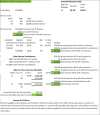Gordon Gekko
Registered User
- Messages
- 7,936
Hi
Say I'm on €100k a year in the public sector, and with 40 years service under my belt at age 60, I can retire on a pension of €50k a year.
That €50k includes my State Pension.
I know that between 60 and State Pension age the State Pension piece is paid in a different way to make the pensioner whole.
What is the position with regard to early retirement on an actuarially reduced basis? For example, if it's (say) 67% of 3/4 of the original entitlement for a 50 year old, is the starting point still the €50k?
Many thanks.
Say I'm on €100k a year in the public sector, and with 40 years service under my belt at age 60, I can retire on a pension of €50k a year.
That €50k includes my State Pension.
I know that between 60 and State Pension age the State Pension piece is paid in a different way to make the pensioner whole.
What is the position with regard to early retirement on an actuarially reduced basis? For example, if it's (say) 67% of 3/4 of the original entitlement for a 50 year old, is the starting point still the €50k?
Many thanks.
